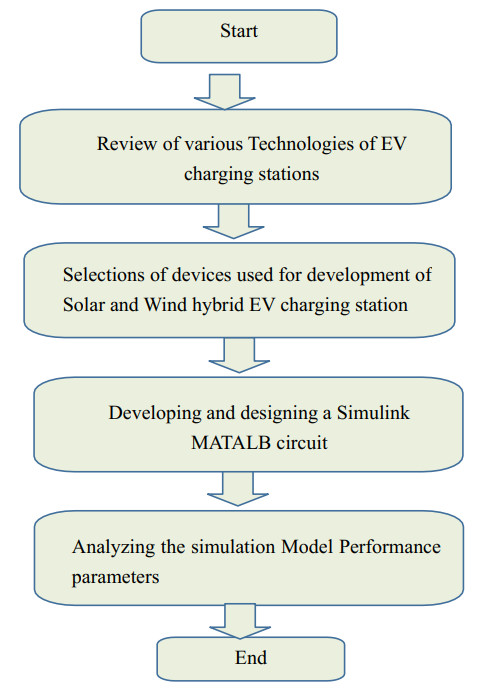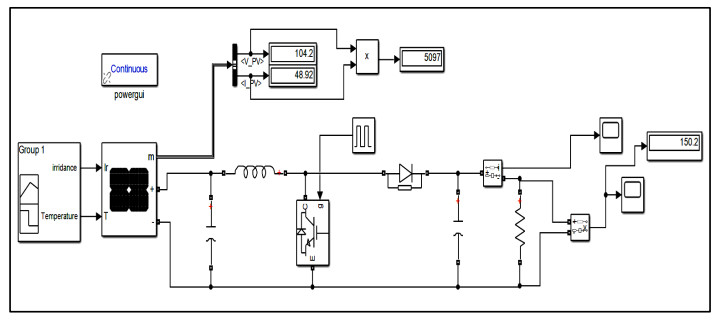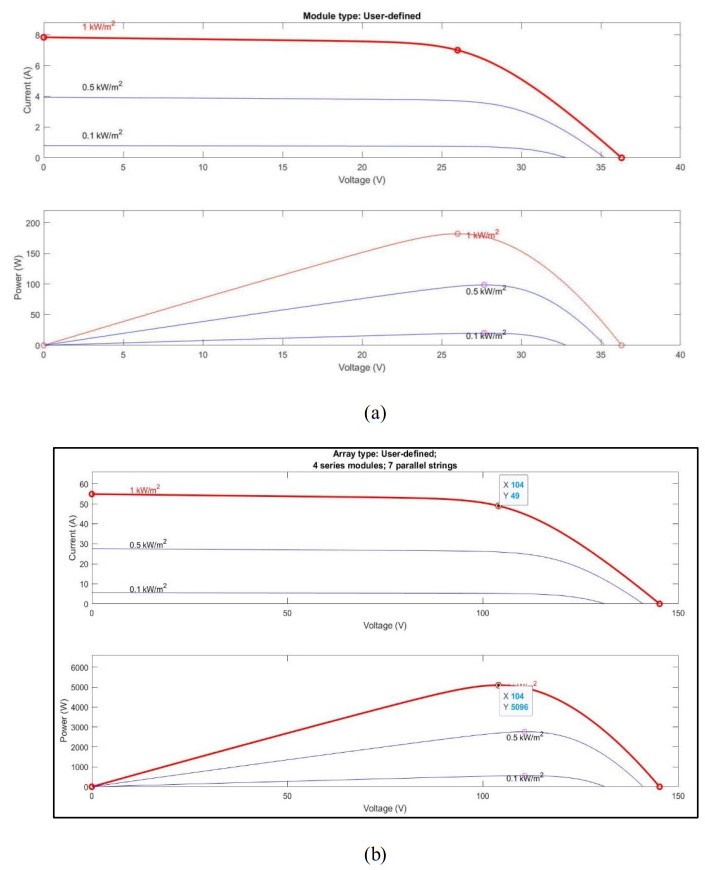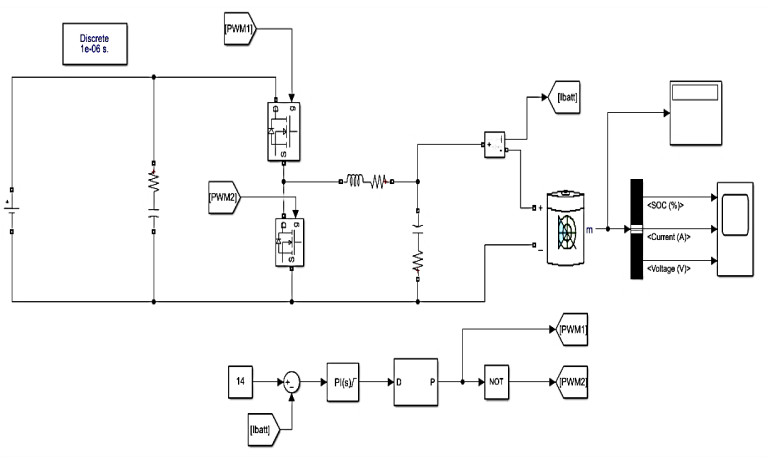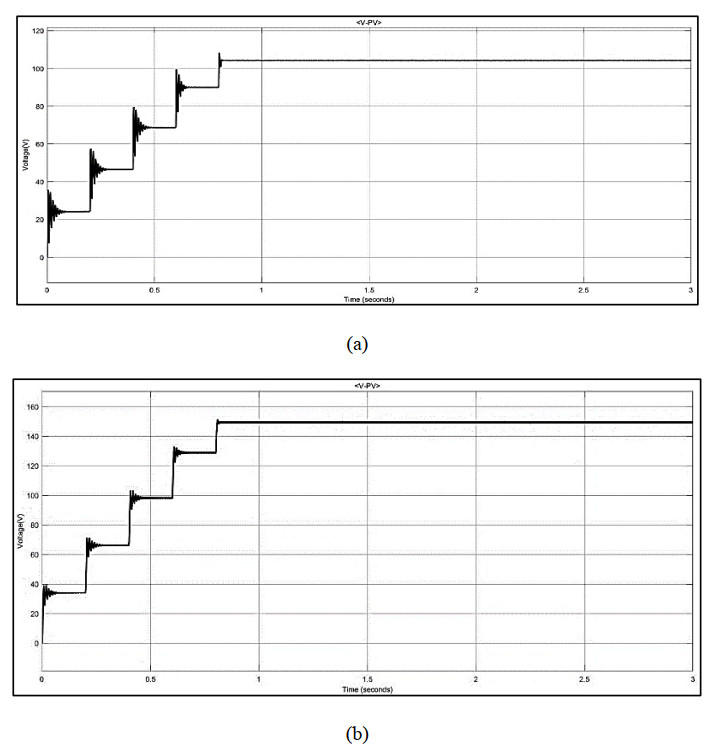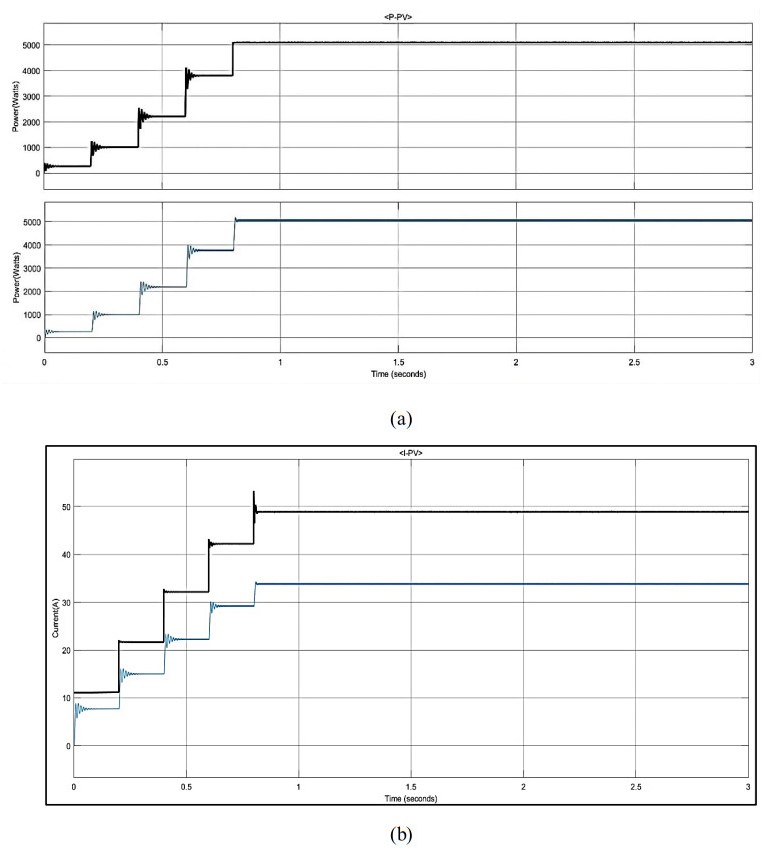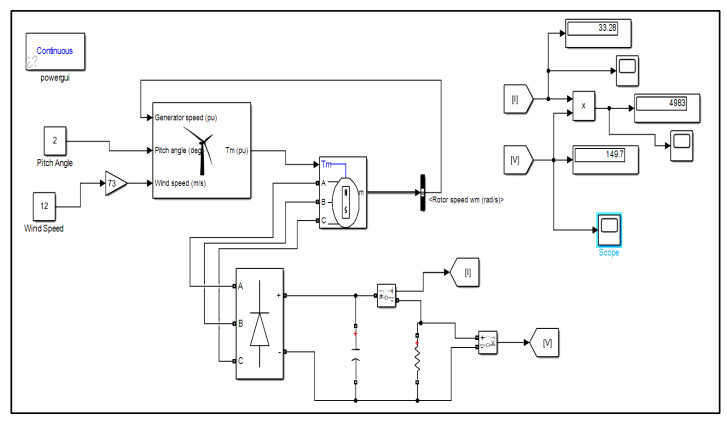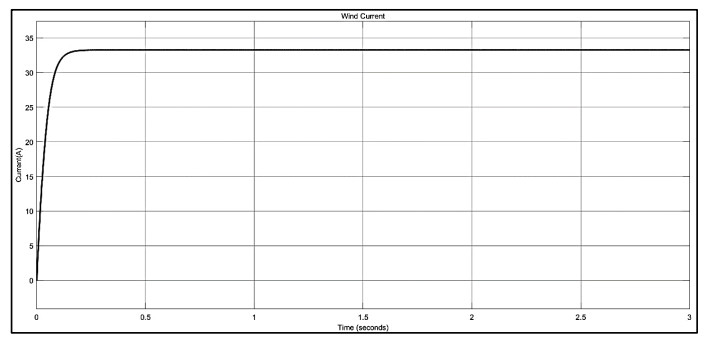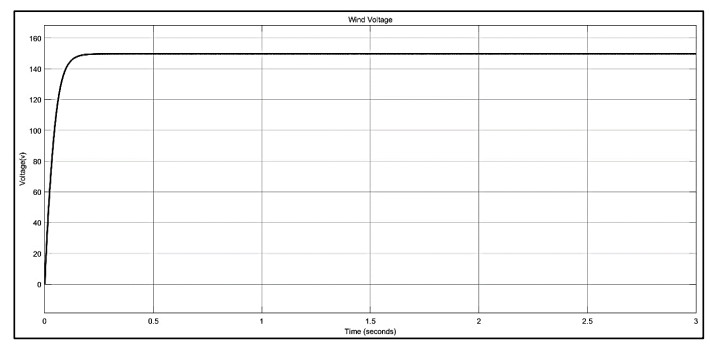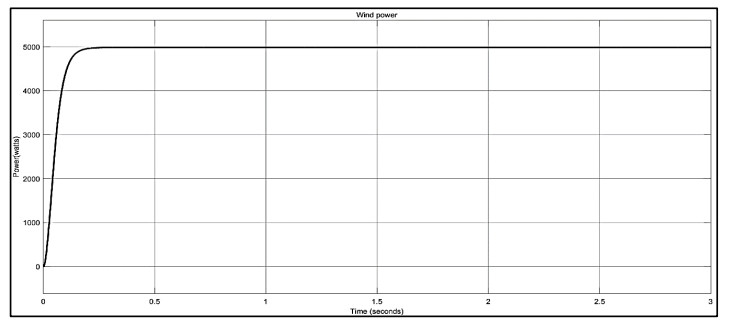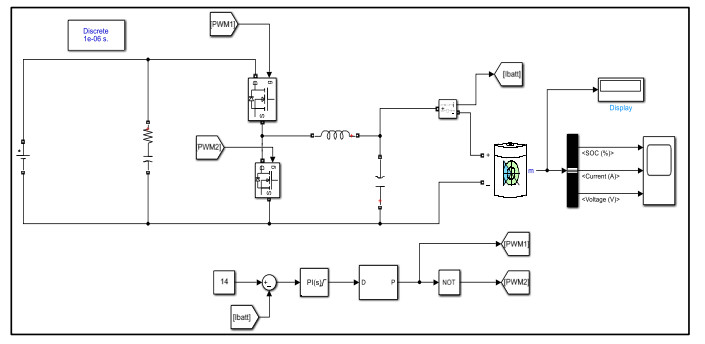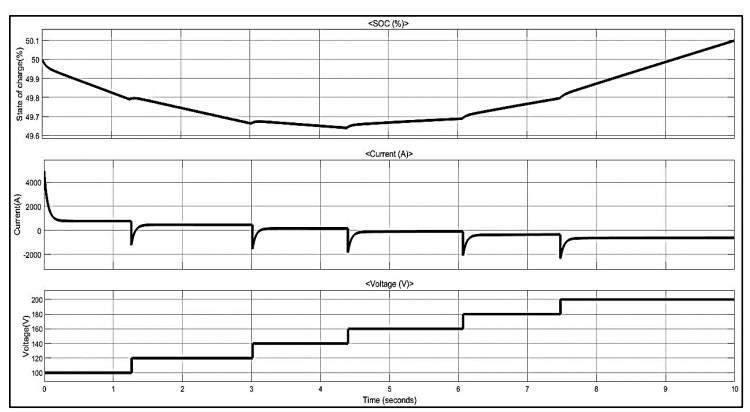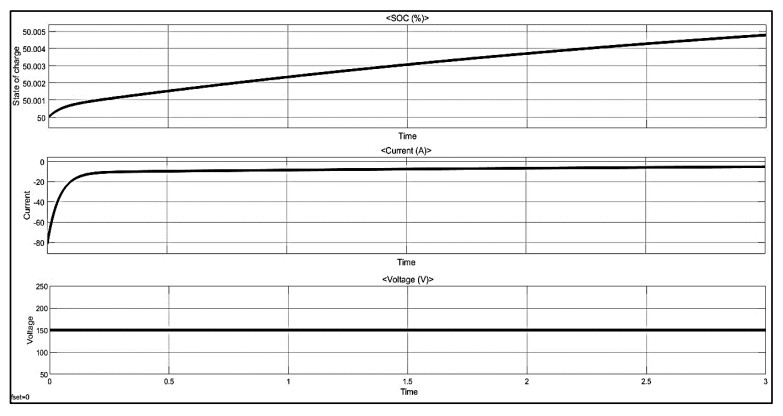Nomenclature: EV: Electric Vehicle; PV: Photovoltaic; AC: Alternating Current; DC: Direct Current; MPPT: Maximum Power Point Tracking; RES: Renewable Energy Sources; DG: Distributed Generation; ICE: Internal Combustion Engine; G2V: Grid to Vehicle; V2G: Vehicle to Grid; HEV: Hybrid Electric Vehicle; LDV: Load Driven Vehicle; PI: Proportional Integral; PWM: Pulse Width Modulation; ICE: Internal Combustion Engine; EVCS: Electric Vehicle Charging Station; WECS: Wind Energy Conversion System; ESS: Energy Storage System
Variables: Duty Cycle: D; Input Voltage: Vin, Volts (V); Output Voltage: Vout, Volts (V); Switching frequency: Fsw, Hertz (Hz); Load current: IL, Ampere (A); Pitch Angle: Β, Degree; Maximum Power: Pmax, Watts (W); Inductor: L, Henry (H); Capacitor: C, Farad (F); Diode: D; Load Resistance: RL, Ohms (Ω)
1.
Introduction
The global transition from fossil fuels to renewable energy sources using electric vehicles (EV) continues to grow with the passage of time. It demands the maximum penetration of renewable energy in the power system network. Nowadays, the energy security, energy sustainability, and climate change are the prominent challenges to achieve the lasting solution in terms of renewable economy[1,2]. In addition, EV challenges include forecasting, stability, and power quality of renewable energy sources. Therefore, effective power management and coordination is important to address these issues [3,4].
Renewable energy sources like wind and solar can be used as an alternative fuel in the modern transportation system. These alternate fuels are increasingly popular and efficient with the passage of time. It is likely to replace the conventional internal combustion engine (ICE) vehicles with electric vehicles. These environment friendly fuels not only reduce the dependence on the fossil fuels but also decrease the hazardous effects of climate change, air pollution and human health concerns [5,6]. As the global adoption of EVs continues to grow, the demand for electric vehicles charging stations (EVCS) increases dramatically in the distributed generation (DG) [5,7]. Hence, these charging stations play an important role in the transition to electricity power mobility by providing a flexible and simple charging mechanism and are also dependent on electricity for EV charging. These charging stations have a significant impact on the power grid [8].
The bidirectional charging which includes EV charging to and from the power grid is important because grid facilitates charging from power reserves at appropriate times [9]. Traditionally, most of the electricity for EV charging drawn from the existing grid is often powered by fossil fuels. To achieve the full environmental benefits of EVs, it is imperative to shift towards renewable energy sources for charging infrastructure. Solar and wind energy have gained prominence as clean and sustainable sources of electricity generation. By harnessing the power of the sun and wind, it is possible to create charging stations that are not only carbon-neutral but also reduce strain on the power grid [10]. The abundance of natural resources in rural areas provides important opportunities for diversification. Integration of renewable energy sources is emerging as an important strategy for introducing EVs and increasing access to electricity in rural areas [11]. Therefore, optimal scheduling of electricity consumers and power grid network results in better grid utilization and enhanced renewable energy integration [12]. However, the prominent renewable energy resources (RES) encompass fluctuations in wind speed and solar intensity. Therefore, integration of power grid needs to be limited to ensure the safety and stability of power system network [13]. Reliable power plants are installed using natural resources as the primary source of electricity.
The charging infrastructure of an electric vehicle has been an interesting area, and it has been researched by many researchers briefly given as follows. The EV has witnessed sustained growth in production and likewise reduction in carbon dioxide emissions. Considering the predicted growth, many countries are heavily investing in the charging infrastructure of renewable energy. However, meeting the global demand of clean transportation, the production of EV batteries would be the key bottleneck in the development of EVs [14]. Other researchers analyze the growth in the electricity demand due to high penetration of electric vehicles and their impact on the emission of carbon dioxide is calculated. However, the study highlights that the production of EVs will not rapidly increase in the recent past to replace the fossil fuel resources for transportation purposes [15]. The stochastic scheduling of coordinated, uncoordinated and smart charging models are investigated to meet charging demands for plugin hybrid electric vehicle (HEV) using hybrid microgrids [16]. Also, a machine learning approach is used for energy management of HEV charging in renewable microgrids [17]. Furthermore, management of smart cities thereby bringing the balance in the power system also requires renewable energy for grid to vehicle (G2V) or vehicle to grid (V2G) for clean transportation purposes [18]. In addition, the two-level optimization framework using tri level management strategy is used in the literature for EV charging [19]. Many authors have focused on grid to vehicle technology for managing EV charging. However, the main concern is the surplus electric energy for the power grid. Therefore, vehicle to grid technology is becoming popular and commonly used for charging of electric vehicles [20]. Therefore, bidirectional converters are used to accommodate the import and export of renewable energy to or from the power grid. These converters act as an interface for establishing bidirectional charging mechanism for monitoring, control, and regulation of EV charging. Another study found that level 1, level 2, and DC fast charging using plug in pattern for home, work and public location [21]. Therefore, The PV-Wind hybrid system excels in handling seasonal variations in daylight and wind conditions, effectively addressing power oscillation challenges [22]. During periods of reduced sunlight, like monsoons or cloudy days, the PV module output decreases, but the constant wind during monsoons enables the Wind Energy Conversion System (WECS) to compensate, ensuring a steady electricity supply. This dynamic interaction showcases the system's adaptability to diverse weather conditions. Emphasizing the importance of a storage unit for grid stability in renewable energy scenarios, it plays a key role in balancing power generation and consumption, reducing energy wastage [23]. The block diagram of a proposed scheme is given in Figure 1.
The author contribution is given as follows:
Ⅰ. The PV-Wind hybrid system's storage unit ensures uninterrupted power supply in unelectrified areas, like unincorporated settlements and islands, thereby enhancing reliability and minimizing the physical dimensions of the battery storage system.
Ⅱ. The Level 2 charging infrastructure is used for fast charging and manifests high power rating than level 1 charging.
Ⅲ. These resources make it possible to build public charging station infrastructure with power electronic converters specifically designed for electric vehicles.
The research paper is structured as follows. Section 2 deals with motivation and contribution. Whereas section 3 deals with research methodology of the proposed system. Section 4 with the results and discussion. Finally, the paper ends in section 5 with conclusion and future recommendations.
2.
Motivation and contribution
The depleting fossil fuel resources and increasing oil and gas prices in the international market are the biggest motivation for the widespread use of electric vehicles based on renewable energy sources. Therefore, the foremost idea is to develop the infrastructure for the charging of EVs. For this purpose, several researchers have worked in this field. The authors have made contribution to enable the fast-charging infrastructure which is to be used for modern transportation system. In addition to it, the focus is given to make it simple, reliable, and implementable in real sense for clean transportation purposes.
3.
Materials and methods
We aim to design a versatile Level 2 electric vehicle (EV) charging station, operating at 240 volts with a 10-kW power delivery capacity, incorporating solar and wind energy for sustainable EV charging using V2G technology to sell power to the grid [24]. Level 2 charging is known for its efficiency, making it suitable for diverse residential and commercial locations like residences, workplaces, shopping centers, and transportation hubs [25]. The project adopts a multi-faceted approach, utilizing MATLAB for simulation modeling to represent the entire charging process. The success of this simulation is crucial, serving as a litmus test for the design of a wind-solar hybrid system. This study develops a flow chart for the research methodology, which is depicted in Figure 2 to develop the Simulink model.
Meticulous research methodology guides the project's execution, ensuring precision and efficiency. Ultimately, we aim to deliver a high-performance, eco-friendly EV charging station, backed by comprehensive simulations and valuable recommendations for future wind-solar hybrid systems in EV charging.
For the simulation work, the devices like boost converter and PI controller are used for the conversion and control of charging of electric vehicles. The simulation results are taken with and without the implementation of boost converter. The proposed hybrid power system integrates solar PV, wind energy, and battery storage to ensure a continuous and reliable energy supply, particularly in areas with unreliable or unavailable grid connections.
Key components, including individual DC-DC Boost converters for PV and wind sources and a bidirectional Buck-Boost converter for the battery, are interconnected in parallel to a common bus, offering a versatile energy solution for diverse applications.
3.1. Modeling of the proposed system
The proposed hybrid power system combines solar photovoltaic (PV), wind energy, and battery storage to create a dynamic and sustainable solution, ensuring continuous and reliable energy [26]. The PV and wind serve as primary sources, with the battery as a backup for load driven vehicles (LDV) employing power levels from 3 kW to 10 kW. The system employs DC-DC Boost converters for PV and wind and a bidirectional Buck-Boost converter for the battery, optimizing energy conversion [27]. In this system, 5 kW power level is considered as level 2 charging infrastructure. Components are interconnected in parallel to a common bus, providing diverse applications from domestic use to electric vehicles. Key components include PV arrays, wind turbines, converters, inverters, batteries, rectifiers, and AC loads. This thoughtful design ensures seamless integration, optimal energy utilization, system stability, and reduced power fluctuations. The PV array modeling comprising various parameters and their magnitudes is given in Table 1.
In this system, 5 kW power level is considered as level 2 charging infrastructure for load driven vehicles. The suitability of level 2 system is that it enables fast charging with high efficiency. Moreover, it does not degrade its charging performance with the rise of temperature. Moreover, maximum power point tracking (MPPT) system is used as a charge controller for level 2 charging infrastructure using solar PV.
The wind turbine modelling parameters with their respective magnitudes are given in Table 2.
Using Wind Energy, 5 kW micro wind turbine is used for the proposed system. The pitch angle is set at two degrees to establish change in speed of wind turbine. The DC-DC boosting circuit consists of key components: inductor (L), diode (D), capacitor (C), load resistance (R), and a control switch (Sc).
The output voltage boost converter is controlled by adjusting the duty cycle of the switch involving the amplification of input voltage configuration. The modification of the switch's ON time allows for precise control and alteration of the output voltage. The calculation of design parameters for the modelling of DC-DC boost converter is given below.
3.2. Boost converter modeling
The DC-DC boosting circuit consists of key components: inductor (L), diode (D), capacitor (C), load resistance (R), and a control switch (Sc). The output voltage boost converter is controlled by adjusting the duty cycle of the switch involving the amplification of input voltage configuration. The modification of the switch's ON time allows for precise control and alteration of the output voltage. The calculation of design parameters for the modelling of DC-DC boost converter is given below:
Input Voltage (Vin) = 140 Volts Output Voltage (Vout) = 150 Volts
Switching frequency (Fsw) = 10 kHz Load current (IL) = 34 A
Step 1: Calculation of Duty Cycle (D) determines the time required by the EV for charging duration to time for un-charging period and is expressed in Eq 1.
Step 2: Calculation of Ripple Voltage is important to determine distortion in voltage output and is given in Eq 2.
Step 3: Calculation of inductance highlights the variation in load current and is expressed in Eq 3.
Step 4: Calculation of Capacitance implied for boost converter modeling is provided in Eq 4.
3.2.1. Bi-Directional DC-DC Converter with Battery
We have designed it in MATLAB Simulink with pi controller. The design parameters can be calculated as follows:
Given data: Input Voltage (Vin) = 150 Volts Output Voltage (Vout) = 48 Volts
Switching frequency (Fsw) = 5 kHz Ripple current = 1.0 A and Ripple Voltage = 0.4 V
Step 1: Calculation of Inductor Value is provided in Eq 5.
Step 2: Calculation of Capacitor Value for bidirectional DC-DC converter in expressed in Eq 6.
The battery is rated at 100 AHs with 50% initial state of charge determining the capacity of the battery with a response time of 1 sec. The ripple current and ripple voltage are used at the output of boost converter to filter out the pulsations or fluctuations in output parameters. The switching frequency is set to 5 kHz for rapid transfer of signals from the boost converter to PI controller using pulse width modulation (PWM). In this system, the solar PV, wind, and battery source system are integrated together with DC-to-DC boost converter to ensure electric vehicle to grid integration.
4.
Results and discussion
The results are analysed in MATLAB Simulink environment comprising solar PV, a micro generator-based wind turbine, and lead acid batteries. These sources act as an input source for the charging station infrastructure of EV. The responses of the main parameters like output current, voltage and power are given in the following sections. The parameters are fundamental to determine the overall response of the proposed system.
4.1. Solar PV structure
MATLAB/Simulink serves as the software employed to create a model of the photovoltaic (PV) panel, utilizing the manufacturer's provided data, which encompasses the variables derived from the expressions mentioned above, along with environmental factors. The Simulink structure of the PV module is illustrated in Figure 3.
Within the system, a block with a ramp input simulates the behavior of the PV panel, generating comprehensive I-V and P-V characteristics under varying irradiance conditions. It can be seen from the simulation results that a voltage of 104.2 V and current of 48.92 A is achieved with a solar irradiance of 1 kW/m2 using the solar panel. Consequently, a power output of 5.097 kW is generated by the solar panel, which is in consonance of the proposed power output. Adjusting the values of the input parameters 'K' and 'G' results in different output responses corresponding to distinct temperatures and radiation levels. The output current and power of PV module at different irradiance levels are shown in Figure 4.
These results clearly demonstrate that the developed model has the capability of forecasting the performance of solar PV cells under changing climatic and physical parameters.
Bidirectional DC-DC converters allow power to be transferred between two DC sources in either direction as shown in Figure 5. As a result of their ability to change the direction of power flow while maintaining the polarity of the voltage at both ends. In electric vehicle (EV) systems, renewable energy power processors, and discharging-charging battery regulators are used. To increase efficiency, the bidirectional DC-DC converter acts as an interface between the high-voltage source and the low-voltage battery in renewable energy systems such as solar and wind power.
The bidirectional converters are switched with PI controller through high frequency PWM modulators. The PI controller is used in a system to control the charging and discharging of the battery discharged through an inductor connected with a bidirectional converter.
The outcome of these simulations serves as a rich source of information, which we have acquired with precision and care. These simulated outcomes offer a glimpse into the real-world performance of our hybrid PV, Wind, and battery system in a controlled setting. These results enable us to understand how the system responds to different inputs, weather conditions, and fluctuations in energy demand. The V-PV results as shown in Figure 6 illustrate that the results are derived without and with the use of DC-DC boost converter. In Figure 6(a), voltage progressively increases with time. At the beginning, the voltage is 24 V at 0.2 sec. Afterwards it ramps up and reaches with initial overshoot of 55 V and output voltage of solar PV is 48 V at 0.4 sec. Later, the voltage increases to 68 V at 0.6 seconds. In addition to it, 90 V is achieved at 0.7 sec., and 104.2 V is achieved at 0.8 sec. It is important to note that as the voltage increases, the overshoot decreases and at the final voltage level overshoot is minimum and after on a steady state voltage is achieved for the rest of the simulation period. In contrast, the basic idea behind the implementation of proposed converter is its simplicity, easy implementation, reliable operation, and has high efficiency in real world applications. Therefore, the boost converter effectively deals with the system parameters and transients during the starting period which affects the system performance. In Figure 6(b), the PV panel output voltage can be seen with improved voltage output and low overshoot, which resembles the effectiveness of the proposed system.
Similarly, the response of the output power and the output current with the use of boost converter is shown in Figure 7.
The results with a boost converter clearly demonstrate the improved performance of electrical parameters in terms of output current and voltage of solar panels. Moreover, the output power is also balanced, which describes the effective performance of the proposed solar system.
4.2. Micro wind generator based wind turbine structure
On the other hand, the utilization of MATLAB/Simulink as the chosen software platform is instrumental in the development of an advanced model for the micro wind generator associated wind turbine. The primary objective of the proposed model is to comprehensively depict the multifaceted behavior of the micro wind generator, and it achieves this by incorporating vital data supplied by the manufacturer. To provide a clear and informative visual representation of the intricate system, Figure 8 illustrates the detailed Simulink structure that forms the foundation of the micro wind generator-based turbine module. This visual aid serves to elucidate the complex interconnections and interactions within the model, rendering it an indispensable tool for gaining insights into and optimizing the performance of the micro wind generator-based wind turbine. The wind turbine is operated at 12 m/s, and a bridge converter is associated with it to provide frequency and voltage stability.
The response of the output current of 10 kW micro wind turbine generator is shown in Figure 9. It is evident that the micro wind turbine attains its peak power generation at a wind speed of approximately 12 m/s, with the blade pitch angle ('β') set to 2 degrees. Under these conditions, the micro wind generator produces a steady output of 5 kW output power. The output voltage is 150 DC voltage after an AC to DC rectifier, as shown in Figure 10.
Along with the maximum current and voltage, the output power comprising of 5 kW is shown in Figure 11.
The results demonstrate that the mathematical calculations are in consonance with simulation results. It describes the effectiveness of the proposed wind power system. Therefore, micro wind becomes a substantial source of improving the output power. Hence, the output power for charging infrastructure of electric vehicles is increased with the addition of micro wind turbine. Another advantage with wind power generation is its availability during the night, making it effective for charging electric vehicles.
4.3. Lead Acid Battery Structure
By utilizing MATLAB/Simulink as our chosen software platform, we have successfully created an advanced model for a DC-to-DC bidirectional buck-boost converter in conjunction with a lead acid battery, featuring a 150 nominal voltage and 150 AH capacity. A PI controller is also used to control the conditions of buck and boost converter. The primary purpose of proposed model is to comprehensively represent the intricate behavior of the converter, which possesses the unique capability to both reduce and amplify voltage levels. In Figure 12, the detailed Simulink structure forms the core of the converter model, offering a lucid and informative visualization of its complex interconnections and interactions. This model stands as an indispensable tool for gaining insights into the converter's functioning and optimizing its performance, establishing its significance within the domain of power electronics and energy management.
4.3.1. Discharging of battery
As can be observed in Figure 13, when the voltage is reduced from the nominal supplied voltage of 150 DC, the battery begins to discharge with a suitable current. The preset value for the state of the battery, which is initially set at 50%, decreases over time. This reduction in battery state is contingent on the load's value connected to the resistance. Additionally, the voltage level gradually decreases during the discharge phase.
4.3.2. Charging of a battery
Figure 14 illustrates the charging process. When the voltage surpasses the nominal 150 DC supply, the battery initiates charging, increasing its state of charge from the initial 50% over time. The charging current is dynamically determined by the supplied power and voltage. This interplay between voltage, current, and power offers insights for optimizing charging and enhancing battery performance in various systems.
In Figure 15, we see how the battery recharges. When the voltage goes above 150 DC, the battery begins to recharge, gradually increasing its power from 50%. The charging speed is adjusted based on the power and voltage provided. This shows how voltage, current, and power are linked and can be managed to make batteries work better. It can be observed that as the simulation current starts with very high Positive for a movement, but rapidly comes down to its original discharging current. This happens due to switching elements. The current graph keeps going in negative because as the battery discharges current goes decreasing, but when voltage reaches higher than 150 volts (t = 4.5 s) current goes below to 0 means charging current starts flowing through it.
5.
Conclusions
We analyzed the technical aspects of the proposed infrastructure of EV charging station system comprising of PV solar, wind and battery as an input source. The suggested system -design provided a low-cost EV charging station based on the proposed system as opposed to a fossil fuel-based charging station. Additionally, a significant reduction in GHG emissions resulted from this type of 10 kW power generation system. The overall simulation was also carried out in the MATLAB Simulink environment. The output parameters derived from RES like current, voltage, and power output with boost converter provided low overshoot and smooth steady state response than that of response without converter. Furthermore, a PI controller is used to regulate the response of charging process. The electrical vehicle charging stations can be installed everywhere in Pakistan as an isolated or standalone power generation, especially in rural areas having no power grid connection. The new research and development in the field of energy storage could pave way for more efficient energy storing equipment. The implementation of fast charging using level 2 strategy and by mainstreaming newly researched renewable technology, along with proper economic analysis would ultimately result in a more efficient system. Finally, a smart interconnected system of charging stations could be utilized. In the future work, instead of single standalone unit, multiple EV charging units may also be installed for higher power output. This strategy will not only compensate for the power demand, but it will also facilitate the power demand in case of varying weather conditions. Hence, it will ensure maximum utilization of generated renewable energy.
Use of AI tools declaration
It is declared that, we did not used the AI tools.
Acknowledgement
The authors highly acknowledge the A'Sharqiyah University Ibra Oman for necessary research support.
Author contributions
All authors contributed equally, such as Mansoor Soomro, Zeeshan Ali Shaikh and Mazhar Baloch put the concept and produce the results through the software, Abdul Manan Shaikh and Sohaib Tahir Chauhdary helped in writing and reviewing the revised version.
Conflict of interest
The authors declare no conflicts of interest.
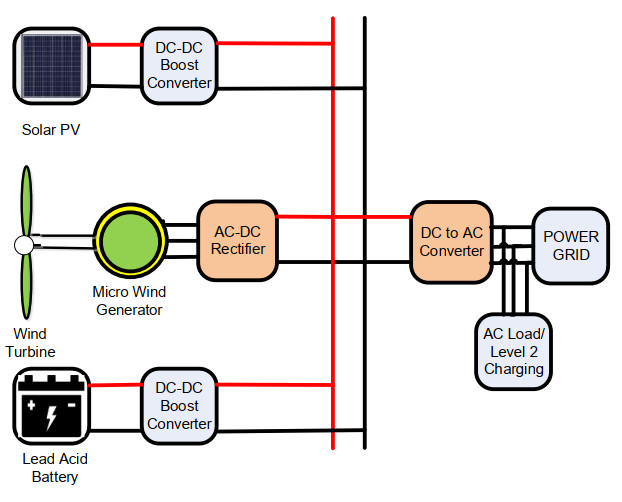









 DownLoad:
DownLoad:
